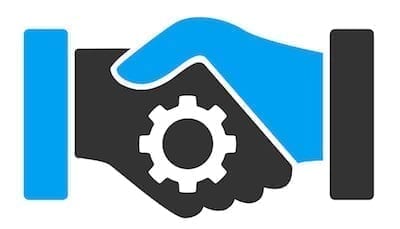How to Determine the Best Contract Lifecycle Management Software For You
As developers of what we consider to be the best contract lifecycle management (CLM) software on the market today, ContractRoom, our instinctual reaction is to say “ours!”. We understand, however, why that might not sound like the most satisfying answer to you.
Finding the right CLM solution is probably more pressing than ever. So here are our thoughts on how you can determine what is the best contract lifecycle management software for your business. In short, it depends on three contracting variables: volume, complexity, and variety.
Contract volume
How many contracts does your business generate in, say, a year? Before you answer, we mean all contracts across all of your business components: sales, marketing, HR, procurement, cap-ex, administrative…the whole shebang. And we mean all manner of contracts, from purchase orders to NDAs to employment agreements to long, complicated procurement or sales arrangements.
If your answer is less than, say, five contracts per year (and they’re not particularly complex – see below), then you may not need contract lifecycle management software at all. Not that you wouldn’t find it useful, but it might be overkill.
Chances are, however, your business generates far more than five contracts per year. If you are in the range of twelve to twenty-four contracts per year, then you probably could benefit from simple contract lifecycle management software solutions. Such as basic eSignature platforms and bare-bones contract lifecycle management software that helps in document assembly and sharing of drafts.
Anything more than that, and your business would likely gain significant benefits and efficiencies from an enterprise contract lifecycle management software solution. With end-to-end contract lifecycle management software that handles every facet of the contracting lifecycle, you not only simplify and systematize the process of contracting. You also transform your body of contracts into a resource from which you can derive insight and drive growth.
Contract complexity
Not all contracts are created equal. There is a substantive difference between a one-page purchase and sale agreement and a fifty-page raw materials supply contract. The more complicated your typical contract, the greater your need for a comprehensive contract lifecycle management software solution.
Contract lifecycle management software simplifies the process of assembling and negotiating complicated contracts. Stakeholders have access to a single editing platform that tracks proposed changes and allows for real-time editing by multiple parties.
Contract lifecycle management software also has search functionality to enable managers to locate and incorporate model language from previous agreements in a snap. Gone are the days of emailing versions back and forth, risking confusion and drafting errors.
Contract lifecycle management software also gives your business the ability to keep track of multiple performance obligations within a complex agreement. Instead of re-inventing the wheel every time you need to go back through a contract to remind yourself what needs to be done when, contract lifecycle management software monitors milestones and can alert you to upcoming deadlines and obligations.
Contract diversity
It’s rare for a business to enter into only one kind of contract, but it happens. If that contract happens to be straightforward and relatively low-volume, then contract lifecycle management software may not be necessary.
But most enterprises of any significant scale have diverse components that enter into contracts on a routine basis. In these enterprises, contract lifecycle management software meets both a substantive and a “structural” need. Here’s what we mean.
Handling substantive contractual diversity
In our experience, when an organization enters into contracts covering a wide variety of subject matter, over time each of those “types” of contract tends to take on its own idiosyncrasies within the organization. There’s no single reason this happens. Rather, different managers have different preferences. Different lawyers may advise different business components. And, of course, different subject matter calls for different substantive contract terms.
Unfortunately, contractual diversity can cause needless inefficiency. As most lawyers know, a solid third or so of the terms in most of an enterprise’s contracts can be substantively identical even if the subject matter of those contracts varies widely.

These terms, such as ones covering what law governs disputes, or how the contract may be amended or assigned, or now notice should be given, need not change from one contract to another, and in fact often create problems for the organization when they’re not uniform. Likewise, the other two-thirds or so of every contract that can vary substantively should still aim to use uniform phraseology and formatting.
In addition, the more diverse an enterprises contracting gets, the higher the risk of substantive terms of contracts conflicting with each other, creating operational challenges.
Contract lifecycle management software helps to solve these problems. It enables an enterprise to maintain consistency in standard terms, which increases predictability and reduces the risk of missteps. It also enables users to link diverse contracts together to track performance milestones and head off conflicts before they arise.
Handling structural contractual diversity
CLM software also tackles the enterprise-wide problem of what we call “structural” contractual diversity. In many large organizations with “siloed” business verticals, even senior executives lack visibility into the entire body of the firm’s contracts. Instead, each vertical keeps its own discrete records, making it difficult to see the entire business-contract playing field.
Best-in-class contract lifecycle management software consolidates contracting into a centralized repository that gives executives the “30,000 foot” view over all of the firm’s contractual obligations in real time. The software also allows business leaders to query that entire body of contracts like any other “big data” source to draw insight from the company’s past and present contracting methods.
[bctt tweet=”Contract lifecycle management software consolidates contracting into a centralized repository that gives executives the ‘30,000 foot’ view over all of the firm’s contractual obligations in real time.” via=”yes”]
So what is the best CLM software?
Ultimately, that’s up to you. Does it meet your precise needs? Will it be able to scale with your organization? Is it backed up by a proven provider with an ironclad reputation? These are all factors that need to be part of your consideration set.
And we, of course, are happy to throw our hat in the ring if you’re after a proven CLM solution. ContractRoom is the industry leader among contract lifecycle management software solutions for medium and large-sized enterprises. To find out why, discover how to transform your body of contracts from an administrative burden into a business asset. Touch base with us today.
See why TeamConnect is the ELM leader
Learn why it's the proven choice for legal departments worldwide.



